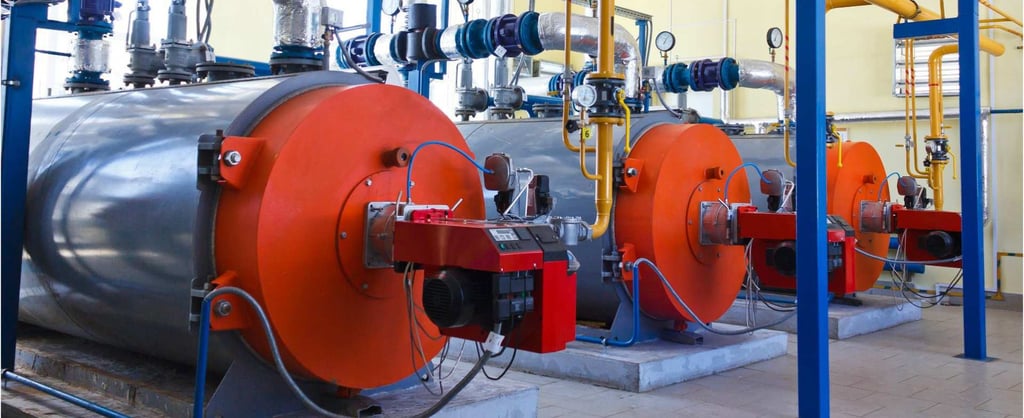At LRQA, we bridge the gap between ASME certification and operational performance.
As Asia Pacific positions itself at the forefront of global industrial expansion, the region faces a defining challenge: how do we scale infrastructure and energy capacity rapidly while ensuring the safety and reliability that modern industry demands?
The APAC Paradox: Speed Meets Standards
Asia Pacific's industrial landscape presents a unique paradox. The region’s upstream oil and gas sector is expected to grow from USD 1.53 trillion to USD 1.97 trillion by 2030. Its oil and gas infrastructure market alone is valued at USD 195 billion in 2024, projected to reach USD 366 billion by 2034 - a compound annual growth rate of 6.5%.
Countries like India plan to double their energy use by 2045, while Indonesia and Vietnam are rapidly expanding exploration to meet urban electricity demands.
Yet this acceleration occurs against a backdrop of regulatory complexity that varies dramatically across jurisdictions including Singapore, Malaysia, Indonesia and beyond. The challenge isn't simply building faster, it's building smarter. In APAC, where energy security is paramount and import dependencies remain high, a single equipment failure can cascade through supply chains, disrupting manufacturing, delaying projects, and, most critically, endangering lives.
Beyond Compliance: Intelligence from Inspection
This is where ASME Certification transcends compliance to become strategic infrastructure. ASME-certified pressure vessels undergo rigorous testing across design, materials, fabrication, welding, and Pressure Vessel Inspection phases. But certification is only the beginning. The true test of any safety system lies in its ongoing verification.
In my three decades of inspection work across global markets, I've seen a critical pattern: many organizations treat inspections as regulatory formalities rather than operational intelligence. They schedule them only when required, viewing them as disruptions rather than opportunities. This mindset misses a crucial reality: pressure equipment tells us when it's approaching failure, if we know how to listen.
Turning Inspection Data into Operational Intelligence:
Modern inspection techniques, from advanced ultrasonic testing to predictive analytics, can identify material degradation, corrosion patterns, and structural weaknesses long before they become critical. For industries operating at high capacity utilization across APAC region, this insight is transformative. It enables condition-based maintenance, reduces unplanned downtime, and extends asset life all while maintaining the highest safety standards.
Lifecycle Value of ASME-Certified Equipment:
Consider the lifecycle value: ASME-certified equipment provides documented baselines for assets that may remain in service for decades. This documentation becomes invaluable for maintenance planning, integrity assessments, and safe decommissioning. The ASME stamp also serves as a universal language across APAC's fragmented regulatory landscape: a pressure vessel certified in Malaysia can be understood and trusted by operators in Singapore, engineers in India, and insurers in Australia.
The Sustainability Connection - ASME Standards in the Energy Transition
As APAC accelerates its energy transition, ASME Standards play an unexpected role in decarbonization. The region increasingly prioritizes natural gas as transitional fuel, with countries like China, India, and Indonesia investing heavily in LNG infrastructure. These systems depend on pressure vessel technology that must perform safely over decades.
LNG and Natural Gas Infrastructure in Asia Pacific:
Similarly, emerging technologies like carbon capture and storage rely fundamentally on pressure containment. Countries like Indonesia, Malaysia, and Australia are enhancing their CCUS policy frameworks, positioning themselves as regional leaders. Yet these facilities will only succeed if their core pressure systems meet rigorous standards.
Pressure Systems for Carbon Capture and Hydrogen Production:
Even renewable energy infrastructure, from hydrogen production to advanced battery systems, incorporates pressure vessels that demand ASME-level rigor. The transition to clean energy doesn't eliminate the need for pressure equipment standards; it reinforces their importance in new contexts.
From Reactive to Proactive - The Role of ASME Training
From an inspection perspective, I've learned that the difference between reactive and proactive asset management often determines whether projects succeed or fail. Organizations that thrive in APAC's complex industrial environment view inspection not as overhead, but as intelligence: data that informs better decisions about maintenance timing, equipment replacement, and operational risk.
ASME standards offer a proven framework, battle-tested across industries and continents. For APAC organizations, embracing these standards isn't about imported requirements. It's about accessing best practices that enable safe, reliable, and sustainable industrial growth.
The path forward requires partners who bring both global expertise and deep local understanding of APAC's unique operational contexts. That’s where LRQA steps in: our ASME Training programs help engineers and plant managers build competency in inspection planning and maintain compliance with global standards across the region.
Supporting APAC's Pressure Equipment Integrity
At LRQA, we bridge the gap between ASME certification and operational performance. As an ASME-accredited Authorized Inspection Agency, we support manufacturers and operators throughout the complete equipment lifecycle, from design review and fabrication oversight to risk-based in-service inspection programs that detect early indicators of degradation before they become critical failures.
Our value extends beyond inspection reports. We help organizations transform their inspection data into actionable intelligence for condition-based maintenance, asset life extension, and asset integrity management. For operators managing pressure vessel fleets across multiple APAC jurisdictions, we provide the technical consistency of global ASME standards while navigating the regulatory complexity unique to each market: understanding how coastal marine environments, tropical climates, and diverse operating conditions impact equipment integrity differently across the region.
Whether you're certifying new equipment, managing aging assets, or delivering cross-border projects, the challenge remains: maintaining safety and reliability while meeting operational demands. Our integrated approach connects ASME compliance with long-term asset integrity management, enabling organizations to reduce unplanned downtime, optimize maintenance timing, and build the operational resilience that APAC's industrial growth requires.
LRQA’s Integrated Approach to ASME Compliance and Asset Integrity Management
For more information on LRQA's ASME compliance and inspection services across Asia Pacific, visit LRQA.

